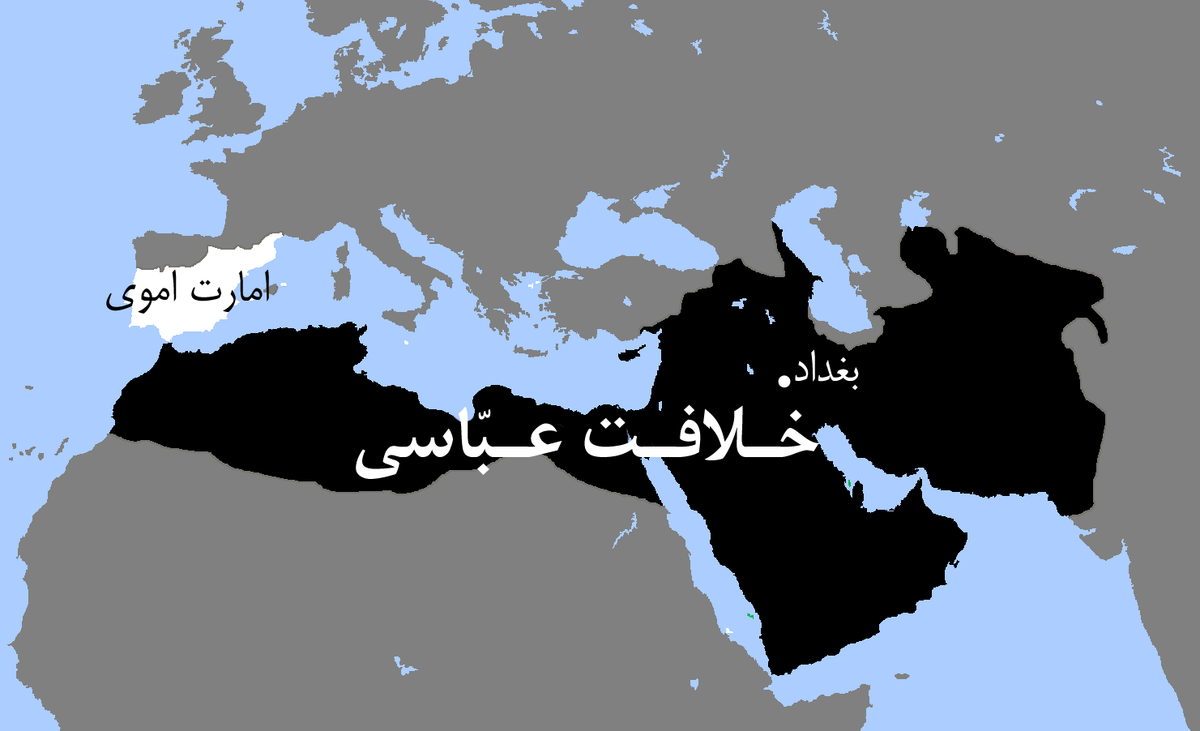The rebellion that changed the Islamic world
The war between the Umayyads and the Abbasids in the 8th century

Map of the Islamic world in the aftermath of the internal war. In black, the symbolic color of the Abbasids, the extension of the Abbasid caliphate. In white the Umayyad emirate, founded by Abd al Rahman, one of the few survivors of the Umayyad dynasty, who took refuge in Cordoba. - Commons Wikimedia
Starting in the 740s, the vast Umayyad Caliphate began to decline. The momentum behind its past conquests had faded, and the moral corruption within the caliphs' courts scandalized devout Islamic groups, such as the Kharijites. Discontent also grew over the concentration of immense power in the hands of a single family—the Umayyads—and a single people, the Arabs. The mawali, or non-Arab Muslims within the Caliphate (including Syrians, Berbers, and Persians), were barred from reaching the top ranks of the military and administration, and Arabic had been imposed at the expense of Greek, Aramaic, and Pahlavi.
Religious opposition also intensified, with Christians and Zoroastrians, who faced the burden of the jizya tax and increasingly restricted religious freedoms, as well as Shia Muslims, who opposed the Sunni Umayyad caliphate. Another source of dissatisfaction was the rising tax burden, mainly due to military expenses. Rebellions in Yemen and North Africa, which were forcibly suppressed, preceded the Abbasid uprising that began in 747. The region of Khorasan, on the eastern edge of the empire, became the base for the rebellion led by Abu al-Abbas, a descendant of a relative of Muhammad from the city of Kufa.
The Abbasids, promising a more just society under a reformed Islam that would eliminate distinctions between Arabs and non-Arabs, quickly garnered support from Shia Muslims, Kharijites, Christians, and non-Arabs (particularly Persians), all united in their opposition to the Umayyads. The first city to fall under Abbasid control was Merv, followed a year later by Kufa, where Abu al-Abbas proclaimed himself the new caliph, and finally, in 750, by Damascus, the seat of Umayyad power. Horrific massacres followed, targeting the Umayyad royal family and their generals, with decapitations, torturous executions, and grave desecrations; fittingly, Abu al-Abbas adopted the title *Al-Saffah*, or "The Blood-Shedder."
The new Abbasid dynasty marked the beginning of a new era in Islamic history, one that would last until 1258 when the Mongols captured Baghdad.
Giustino Marrozzi, Imperi islamici. Quindici città che riflettono una civiltà, Einaudi, 2020
Franco Cardini, Marina Montesano, Storia medievale, Le Monnier University, 2019
2025-04-16
Salvatore Ciccarello
